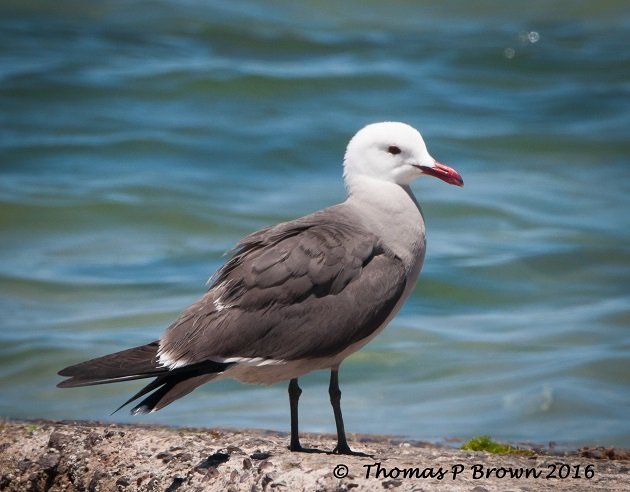
La Paz, Mexico has a beautiful well maintained sidewalk along its waterfront called a malecón. While it is exceptionally well used by joggers, bike riders and multigenerational families out for a walk, bird watchers from all the world are now taking advantage of its easy access to the many local bird species. My personal bird count for walking the malecón is now at 67 species.
With out question, one bird commonly seen here and a rarity elsewhere in the world, would be the Heermann’s Gull. This very attractive gull, an unremarkable dark brown in its first two years, turns in to a thing of beauty in its third. Maintaining the dark back and wings, this medium sized gull has a soft gray body and pearly white head. Black legs and dark red bill complete the look on the mature Heermann’s Gull.
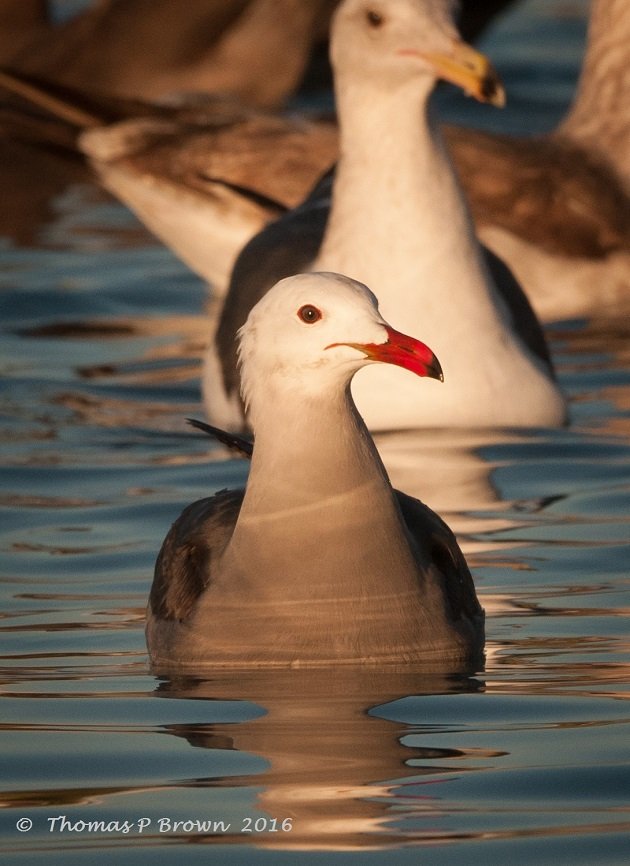
The image below is a first year Heermann’s Gull
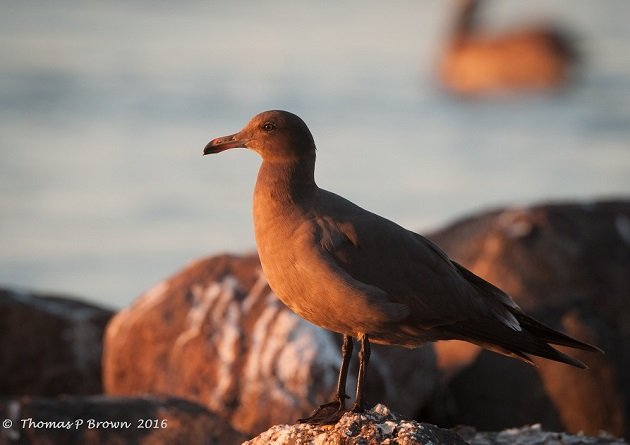
The next image is a second year bird.
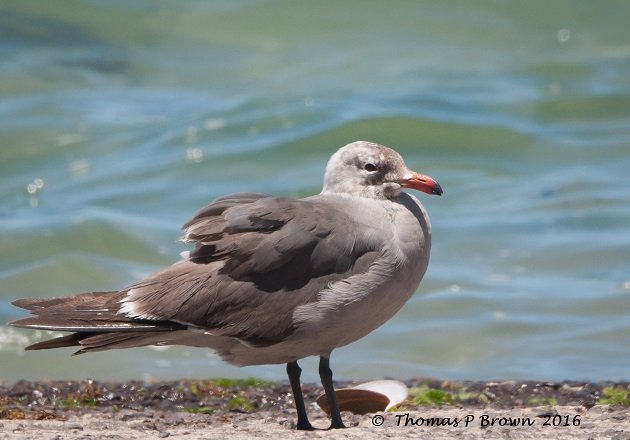
Almost exclusively a Mexican bird, the bulk of the population nest on a single island in the northern part of the Sea of Cortez, Isla Raza. This small, 140 acre island is a barren rock nine months of the year. The remaining three months during nesting season, it is literally covered with an estimated 90% of all Heermann’s Gulls and nearly 100% of all Elegant Tern. While I do not have an educated estimate of the population of the Elegant Tern, current research data shows that nearly 270,000 Heermann’s will be on the Island at the same time. The video and photographic images I have seen would indicate a much higher number of Elegant Terns than Heermann’s Gulls. Throw in a few hundred of the endemic, Yellow-foot Gulls, and you can just imagine what the short term population density is here!
While the population of the Heermann’s Gull is currently steady, they are considered Near Threatened by the IUCN. Given this small, dense nesting location, they are quite susceptible to a singular weather or manmade disturbance, which could have a catastrophic effect on those numbers.
Distribution is obviously concentrated in Mexico, but the gulls have been found as far north as British Columbia, Canada, and as far south as Guatemala.
A few years ago, late in the summer season, and with out this prior knowledge, my wife and I sailed to Isla Raza. We anchored is a small secluded bay for the night. We were quite shocked at how barren it was, and had commented that it was almost like a visit to the moon. We were very happy to leave as early as possible the next morning, when the wind switched directions! The mess left behind by a half a million birds can he quite odiferous!
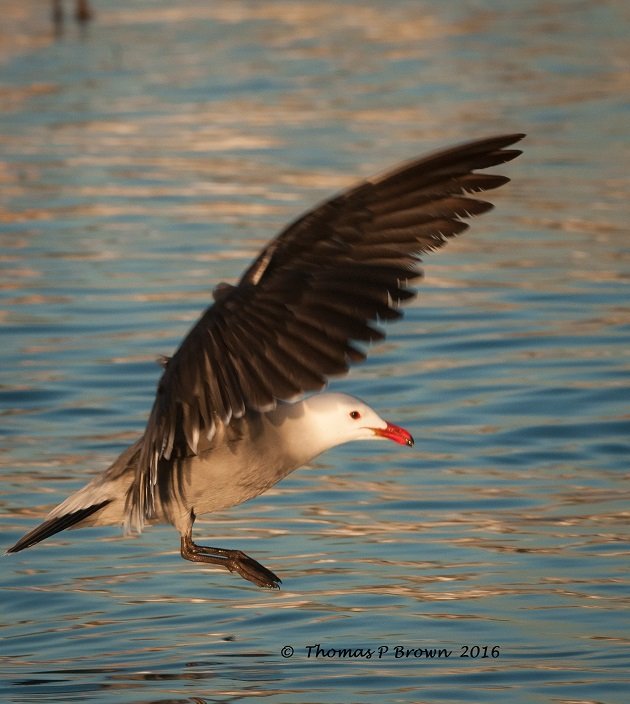













I really enjoyed reading this because we have many Heermann’s Gulls on the beaches in summer months in my town on the Olympic Peninsula in Washington State. They arrive in a big group, exhausted from the journey, and then coexist with our resident Glaucous-winged Gulls and a few other gulls all summer. I just got a rare bird alert that one has already arrived, which is very early. I knew they nested on islands off Baja, but never knew most were on one island, or its name. Thank you for this post! They are gorgeous gulls!
Thanks Wendy, It is my understanding that there are a few that do have some small nesting colonies north of the Mexico border, but I am sorry, I have not been able to track any of those locations down for certain.
There are several interesting videos on U-tube about Isla Rasa that show the island covered in birds.
Thanks again for your note
Tom
Cool post, yes a beautiful gull! Amazing that so many birds nest on that one island.